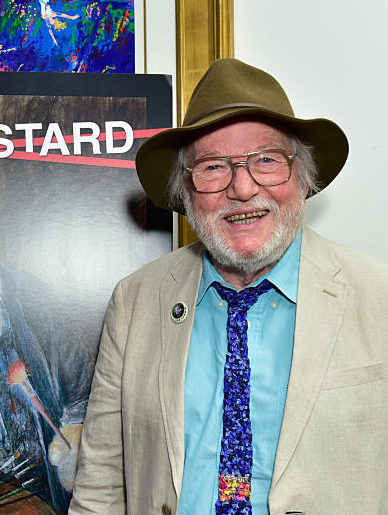-
Court Dismisses Artist’s $100 Million Antitrust Suit Against Prominent Museums
01/21/2019
 One artist’s crusade against what he perceives to be anticompetitive behavior in the New York art world has come to an end—at least for now—as a federal judge dismissed his antitrust claims against five museums.
One artist’s crusade against what he perceives to be anticompetitive behavior in the New York art world has come to an end—at least for now—as a federal judge dismissed his antitrust claims against five museums.
Contemporary artist Robert Cenedella first filed his suit in February 2018, naming as defendants some of the most important museums in New York and in the world: the Metropolitan Museum of Art, the Whitney Museum of American Art, the Museum of Modern Art, the Solomon R. Guggenheim Museum, and the New Museum of Contemporary Art. Effectively, he claims that the museums conspired with one another and with other unnamed conspirators (including unspecified galleries, auction houses, and collectors) to “artificially fix, raise, and control” prices for contemporary art and to “blackball” certain artists, which has allegedly artificially depressed the prices of Cenedella’s art.
Notably, Cenedella filed his suit not only on behalf of himself, but as a putative class action—he asserted that he would represent a nationwide class of contemporary artists who have created artwork “eligible for exhibition in major contemporary art museums” but have not been so exhibited. His allegations, overall, paint a picture of an art market in which a handful of influential galleries—which he refers to as the “Five Galleries,” and which include Gagosian, Pace, David Zwirner, Marian Goodman, and Hauser & Wirth—play an outsized role in what ends up in the defendant museums, with the defendant museums disproportionately purchasing and exhibiting works that are represented by those galleries, thereby driving up prices for those artists. He further points to the museums’ failure to fully disclose their acquisition policies, which, he says, would force them to draw upon a more diverse array of artists. The complaint sought damages of no less than $100 million.
But shortly before the new year, federal District Judge John Koeltl dismissed Cenedella’s claims. As a threshold matter, the Court held that Cenedella lacked constitutional “standing” to bring his claims; constitutional standing is a concept that requires a plaintiff to have suffered an actual or imminent injury caused by the defendant, such that a favorable decision in the case will redress that injury. Here, the Court held that it was “mere speculation” that, if the Court enjoined the alleged conspiracy, museums would begin buying Cenedella’s works; given the amount of discretion museums have in acquiring works, it was insufficient for him to simply assert that his work is of a quality that would be in a museum absent the conspiracy. Further, the Court held that he lacked the kind of standing needed to be an antitrust plaintiff specifically, because of the indirect and speculative nature of his purported injury and the difficulty in estimating how the purported conspiracy might impact the value of his work.
The Court additionally ruled that the complaint filed to adequately allege an agreement between the defendants; it puts forward only conclusory statements, but no specifics about “who agreed with whom, to what, and when,” and seems to focus more on alleged coordination between the defendants and the Five Galleries, as opposed to among the defendants themselves. Indeed, the Court noted that it wasn’t entirely clear how the museums would benefit from driving up the price of artworks they buy, even if their collections increase in value. Rather, the Court held there was an “obvious alternative explanation” to the alleged conspiracy, i.e., that “the defendants simply view works of certain artists, who are often represented by the Five Galleries, as worthy of collecting and showing.”
Interestingly, the Court dismissed the complaint “without prejudice,” which means that Cenedella was not barred from attempting to replead his claims, if possible, in a way that might render them viable. But the Court provided a deadline of January 15 for Cenedella to file a motion to amend, including a proposed amended complaint, and that deadline has now come and gone with no such filing.
While this may be the end of Cenedella’s court battle, he has vowed to continue to try to expose the “secrecy and insider dealing” of the art world. And while the case was widely viewed as a long shot from the outset—Cenedella himself admitted that he had had to shop around to find a lawyer to take the case— it is nevertheless interesting due to its big-picture observations about the New York art market. Cenedella is not the first litigant to point out the massive influence wielded by certain galleries in the market (see here and here for other examples, and see here for a 2015 study which formed the basis for some of Cenedella’s allegations), nor is he the first to complain about the lack of transparency that is often a hallmark of high-end art sales (see here and here for just a few). And the case also highlights the fact that museums—notwithstanding recent high-profile conversations about their public service role—are also economic actors in the art ecosystem, whose actions are inextricably linked to larger price and demand trends in the market. For now, the case is simply another reminder to any art stakeholder—from artists to collectors to dealers to museums—about the relatively opaque nature of the art market.ATTORNEY: Kate Lucas
CATEGORIES: Art Exhibitions, Art Galleries, Fine Art, Gagosian, Legal Developments, Uncategorized
Art Law Blog
